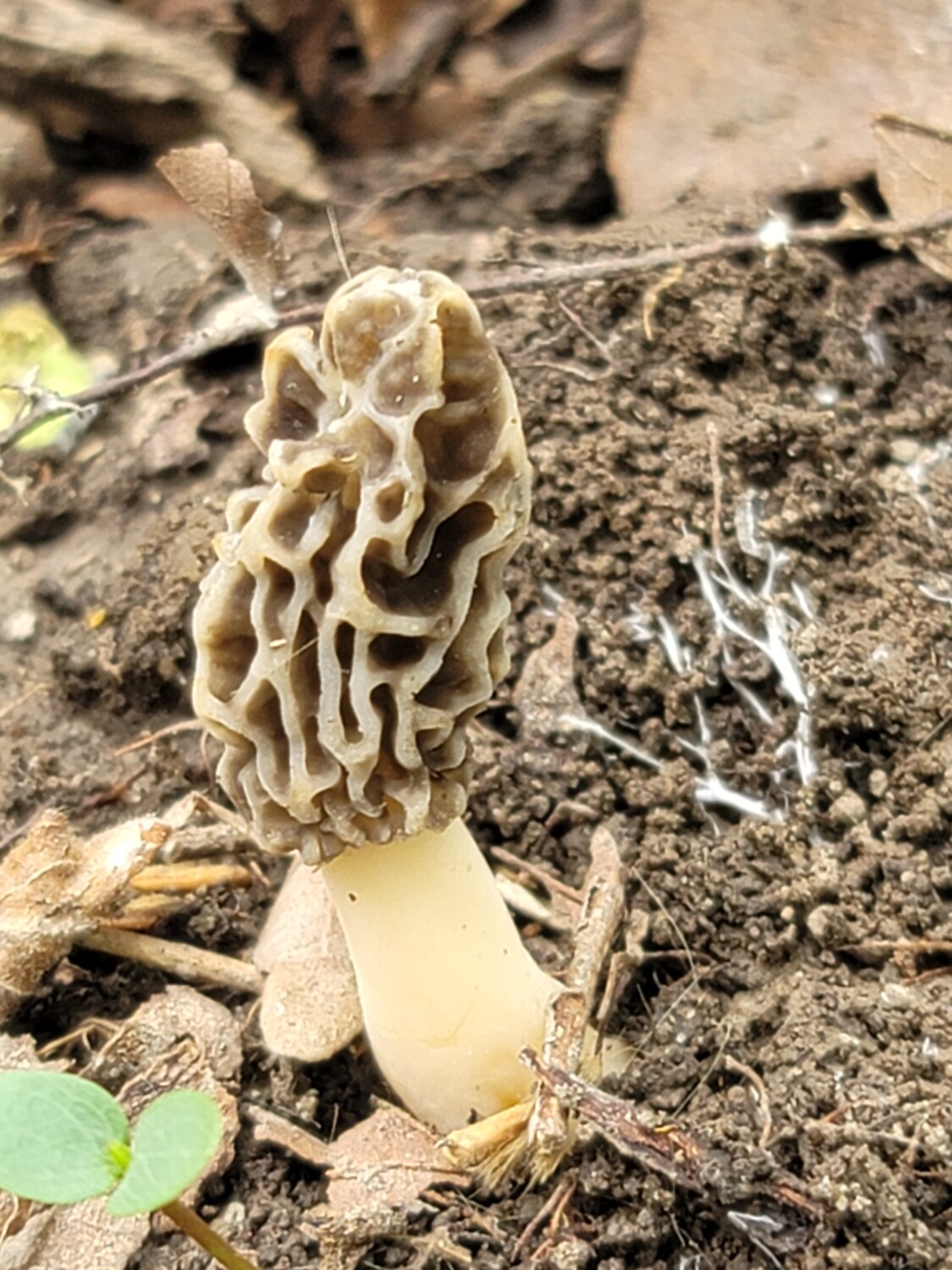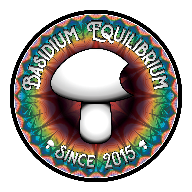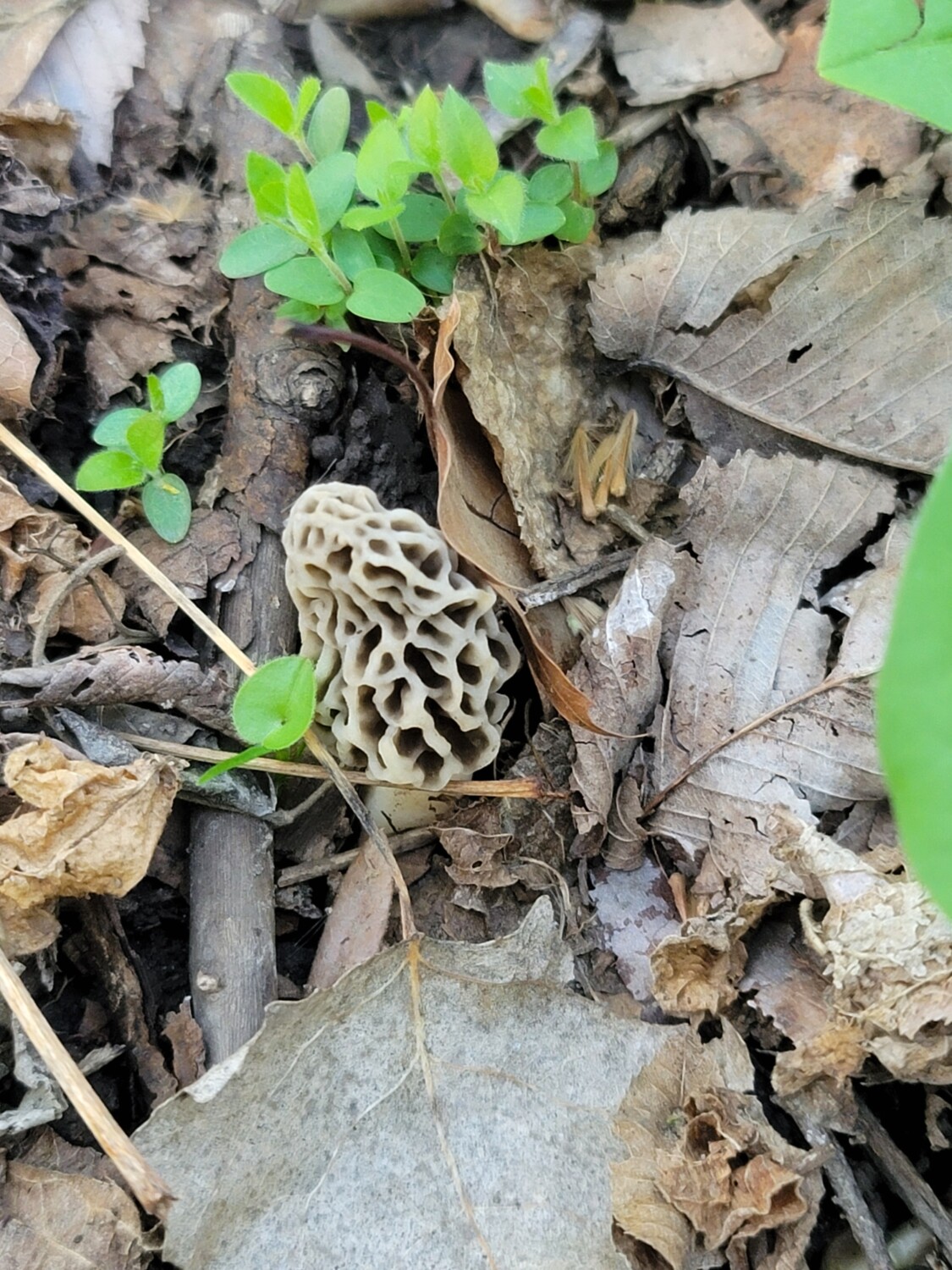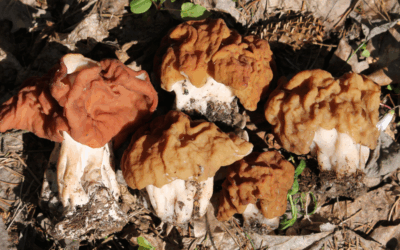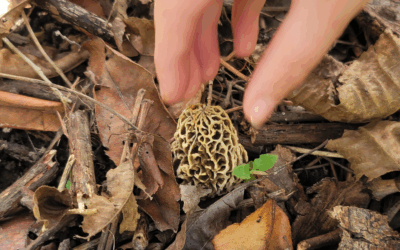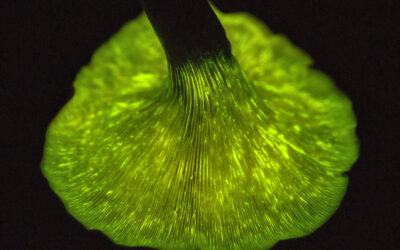Hide & Seek with Morels: A Forager’s Guide to Nature’s Treasure
As spring arrives, mushroom enthusiasts across the Midwest and beyond eagerly head outdoors in search of one of nature’s most elusive and prized fungi: the morel. Known for their distinctive appearance and incredible flavor, morels (Morchella spp.) offer both a culinary delight and a thrilling scavenger hunt for those willing to seek them out.
What Are Morels?
Morels belong to the genus Morchella, a group of sac fungi revered for their unique, honeycombed caps and thick, white stems. These mushrooms range in color from tan to black and can grow several inches tall. Their striking appearance and delicious flavor have made them a favorite among foragers and chefs alike.
Morels are saprobic fungi, meaning they feed on decaying organic matter, playing an essential role in forest ecosystems. They are also capable of producing sclerotia—hardened masses of mycelium that allow them to survive in the soil for years. Sclerotia ensure the morel’s resilience, enabling it to sprout mushrooms under favorable conditions, often after natural disturbances like fires.
Learn more about fungi’s ecological roles on Basidium Equilibrium.
When and Where to Find Morels
Finding morels can feel like playing a game of hide-and-seek with nature. These mushrooms are masters of camouflage, blending seamlessly into their surroundings. Here’s what to consider during each season:
Spring: The Peak of Morel Season
- Timing: In the Midwest, morels typically appear in early April when soil temperatures reach around 50°F.
- Location: Look near dead or dying trees, especially elms, ash, or oaks shedding their bark. Burn sites or disturbed areas often yield fruitful hunts.
- Conditions: Moist, well-drained soil near bodies of water like streams and rivers is ideal. A few sunny days following rain are perfect for morel growth.
- Tips: Slow down and carefully scan the forest floor. Their unique honeycomb pattern and earthy tones can be tricky to spot at first glance.
Summer: A Shady Challenge
As temperatures rise, morels become less common but can still be found in shaded, moist environments. Focus your search near tree lines, under vegetation that provides shade, and in areas with a history of morel growth.
Fall: A Lesser-Known Opportunity
In some regions, particularly the Midwest, fall offers a second chance to find morels. Look for them near oak and elm trees or in areas with dense leaf litter. Cooler temperatures and increased moisture create favorable conditions for their growth.
Foraging Ethics and Respect for Nature
Foraging is more than just collecting mushrooms; it’s about connecting with the forest while respecting its inhabitants. Practice Leave No Trace principles to minimize your impact:
- Pack out all trash.
- Stay on designated trails whenever possible.
- Avoid disturbing wildlife or damaging habitats.
By treating the forest with care, we ensure its beauty and resources remain intact for future generations.
Learn more about ethical foraging practices at Leave No Trace.
The Magic of Sclerotia
Even if your hunt doesn’t yield any morels, all is not lost! Morels form sclerotia, small, hardened masses of fungal tissue that can survive underground for years. These hidden reserves allow the fungi to endure harsh conditions and sprout new mushrooms when the time is right. Knowing this can give foragers hope and inspire them to revisit promising areas in future seasons.
Why Morels Are Worth the Hunt
Morels aren’t just a forager’s delight; they’re also a culinary treasure, renowned for their rich, nutty flavor. Whether you’re a seasoned forager or a curious beginner, hunting for morels offers a rewarding way to connect with nature, enjoy the outdoors, and uncover a prized ingredient for your kitchen.
Ready to dive into the world of foraging? Explore more tips and resources at Basidium Equilibrium.
